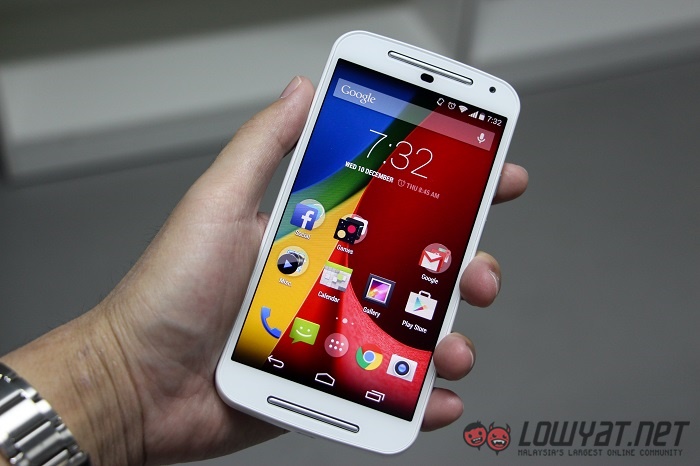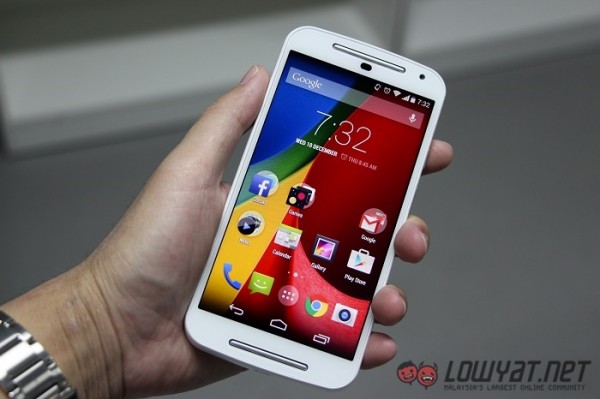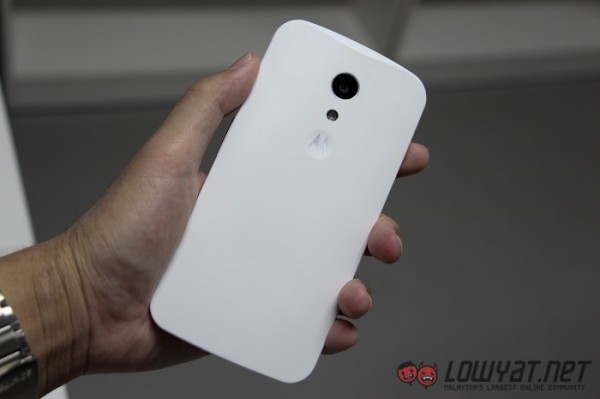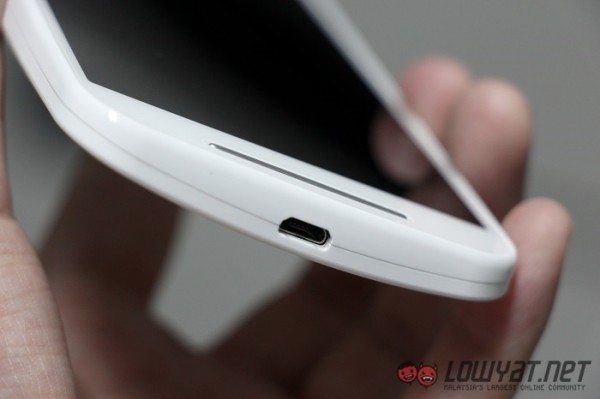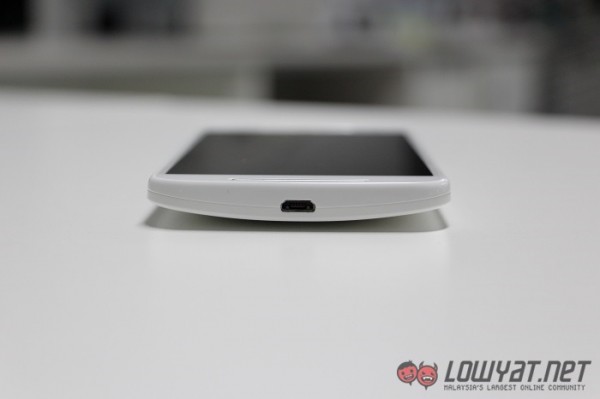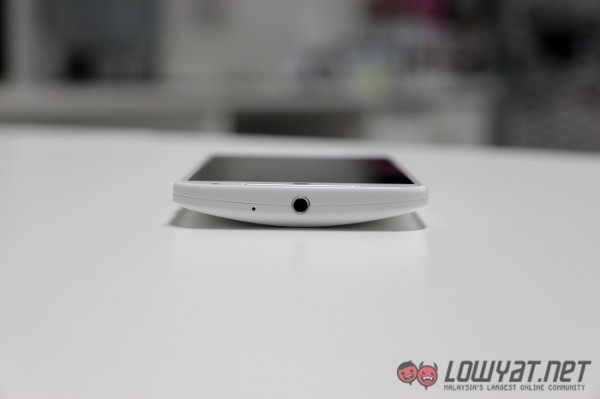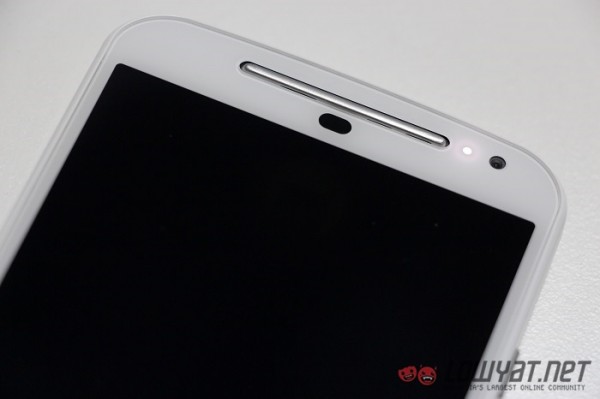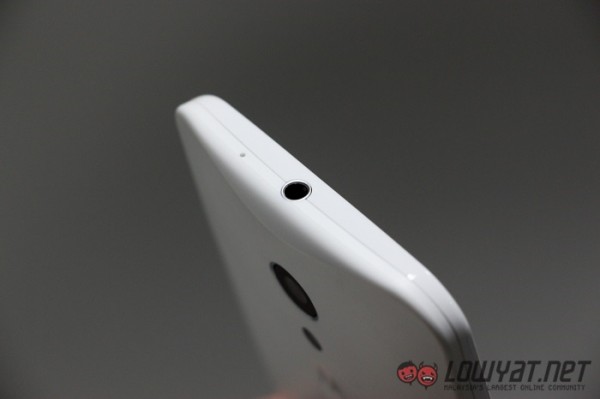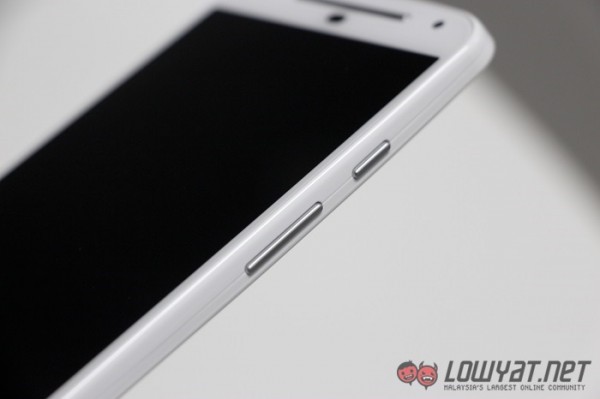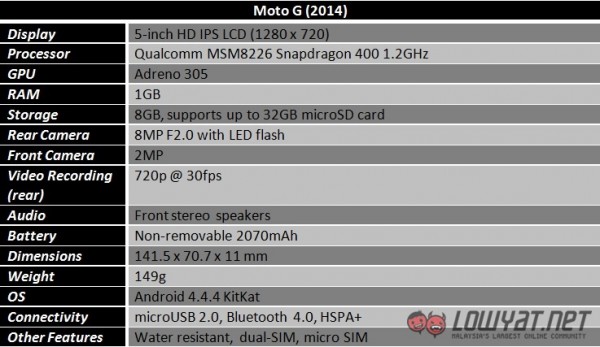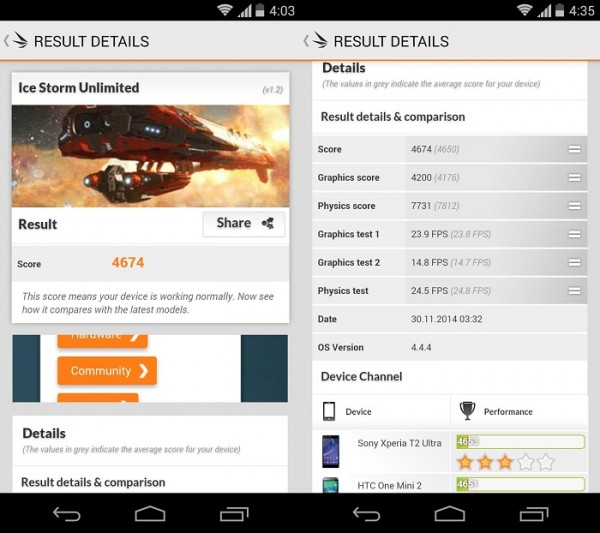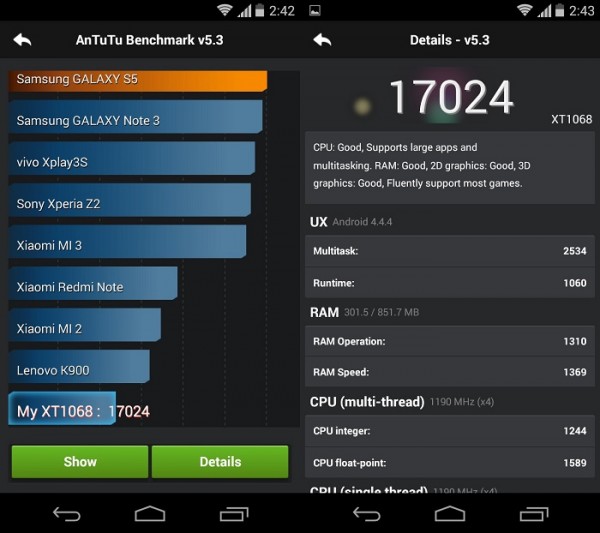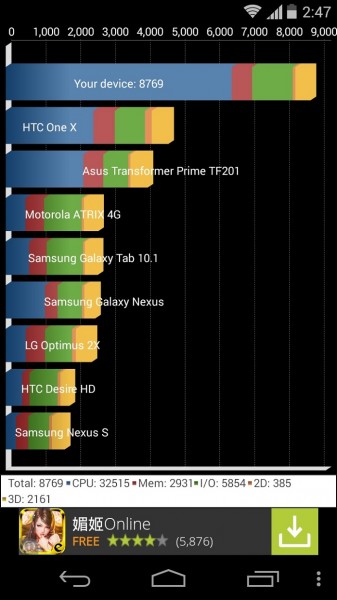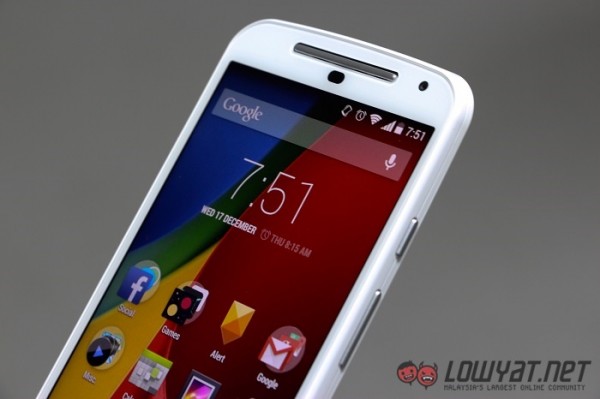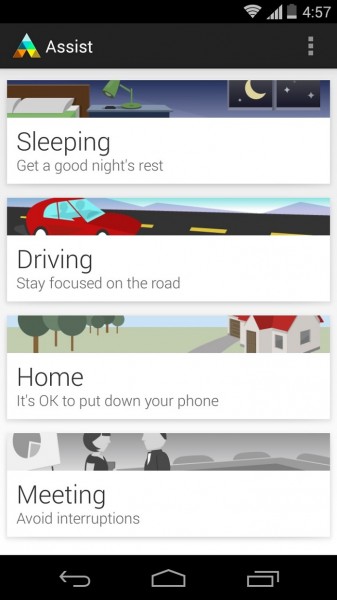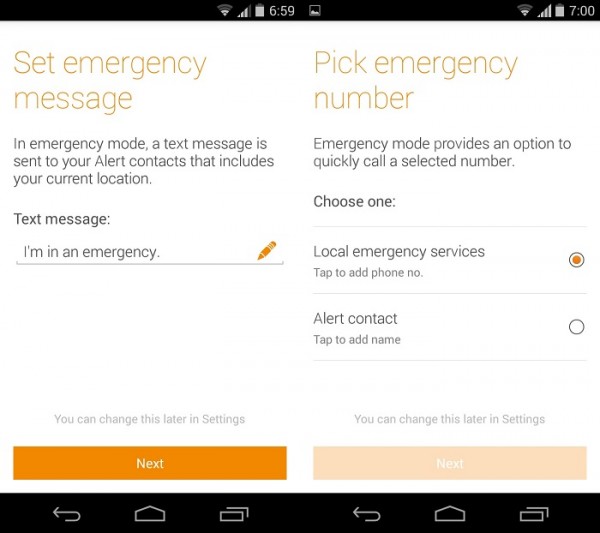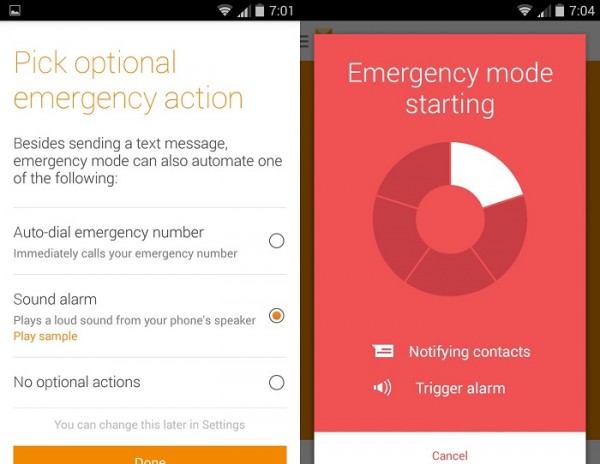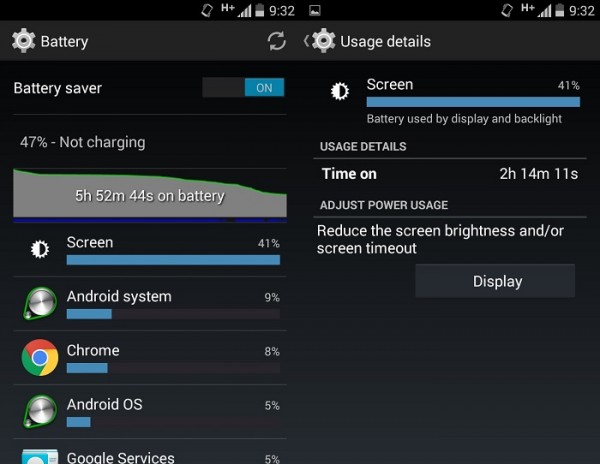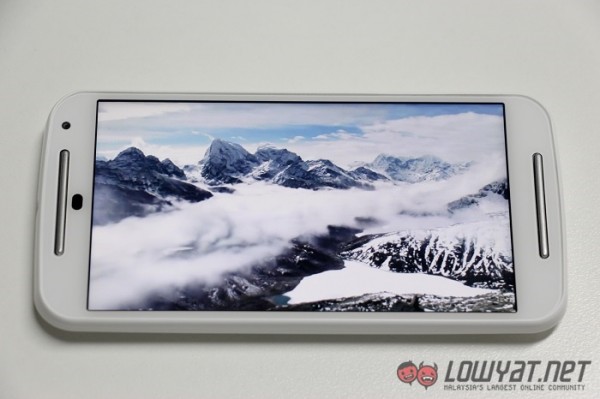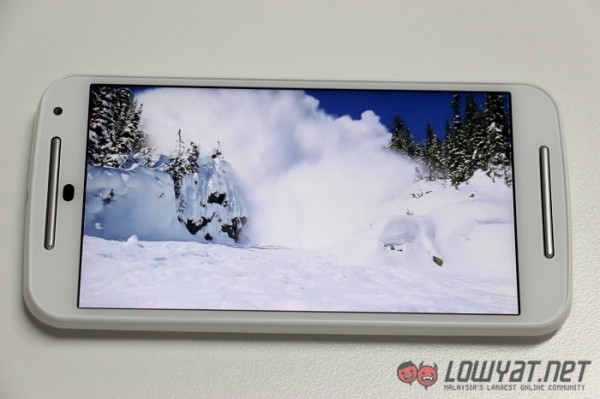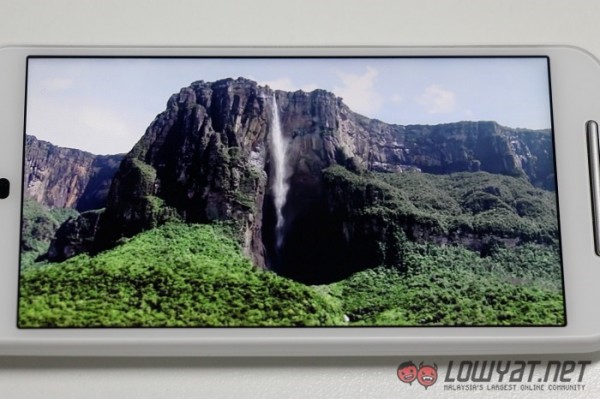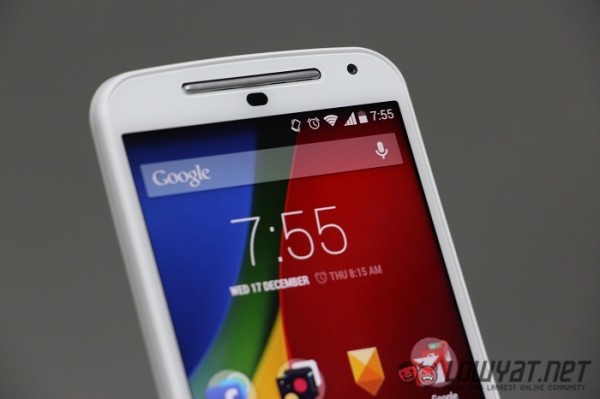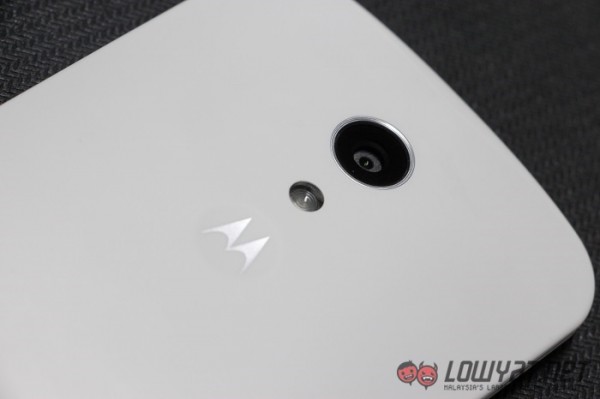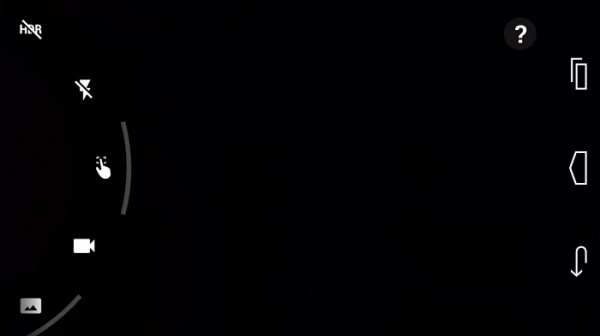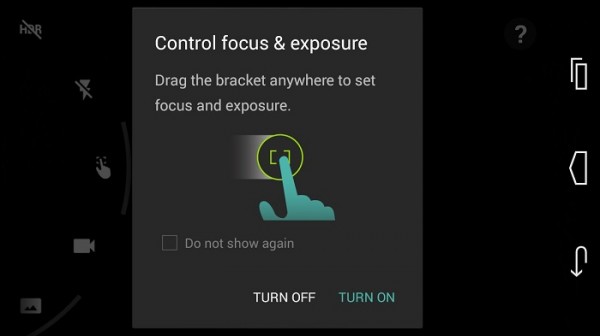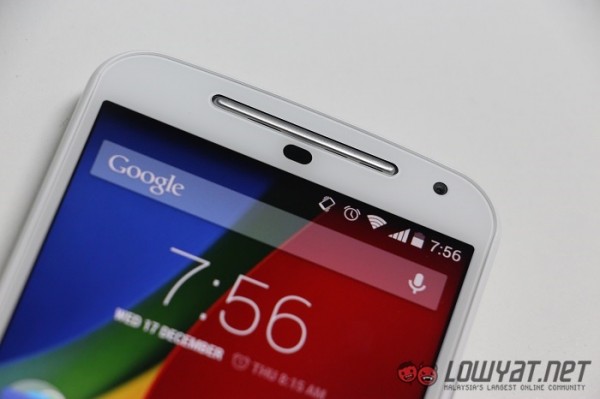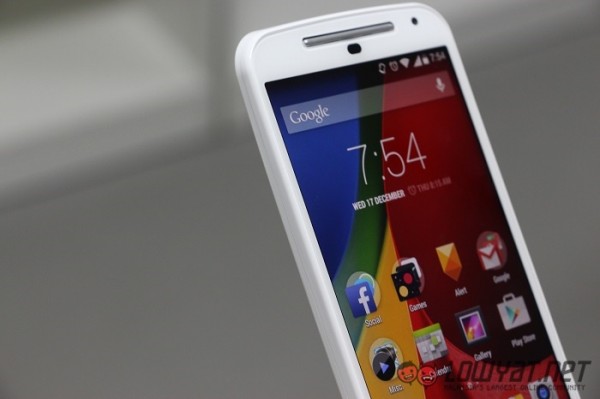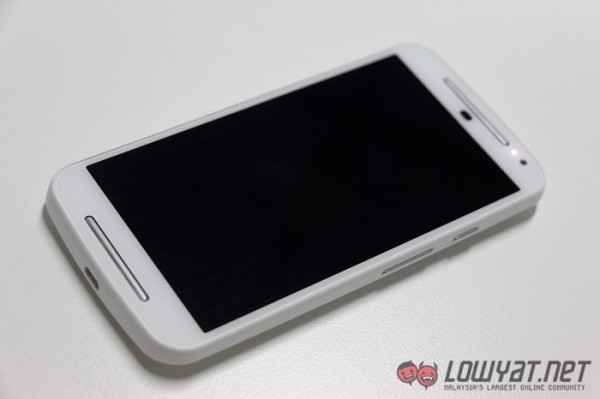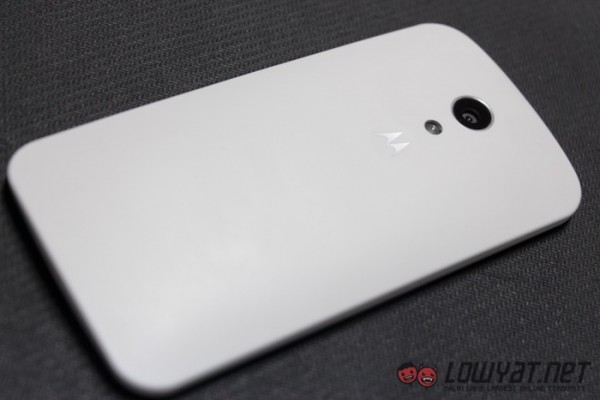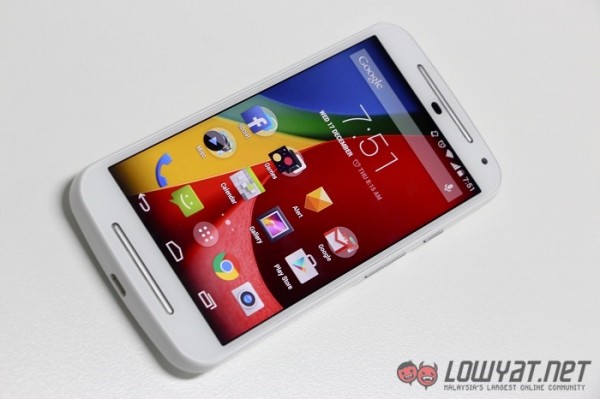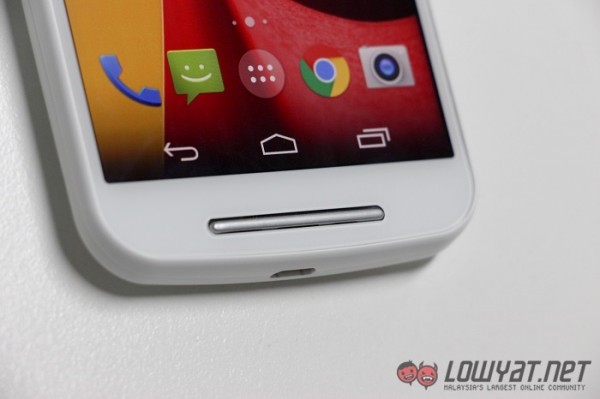The pure Android experience is something of a rarity outside of the Nexus line of devices. A cheap Android smartphone, on the other hand, isn’t exactly hard to find. However, what if you want a cheap phone that is running on stock Android? Look no further than the second iteration of Motorola’s highly successful budget smartphone, the Moto G.
First Impressions
Not much has changed from last year’s model, bar some design changes here and there. When I first picked up the new Moto G, it felt rather cheap. In some ways, the 2013 model actually looks more premium. The back panel creaks a little with added pressure, and the plastic sides of the phone further reminds you that you’re holding a budget smartphone. However, considering that this phone only retails at RM688, it’s pretty expected.
On the flip side, Motorola’s decision to go with Gorilla Glass 3 does add a reassuring feel to the Moto G. The soft rubber texture at the back of the phone is also a very welcome addition. If it wasn’t for the plastic sides of the phone, the Moto G could get away as a more expensive device than it actually is.
Up front, a set of stereo speakers is placed on the top and bottom of the display. The top speaker also houses the earpiece, and right beside it, you’ll find the notification LED. Unfortunately, the LED only displays white, which doesn’t really stand out on the white model of the Moto G.
As I got to setting up the phone, I realise how hard it was to remove the back cover. At one point, the back panel was flexing so much I was afraid I would bend it permanently; or worse, snap it. However, with proper practice and being a little more careful, this shouldn’t be too much of an issue. How often would you open up the back cover anyway?
The slightly curved back of the Moto G definitely helps with the ergonomics of the phone. Although the addition of a dimple at the back of the phone seems like a strange addition at first, it felt like a natural place for my index finger to rest on while operating the phone. It also helps to tell if I’m holding the phone the right side up when taking it out of my pocket.
Typical of a budget smartphone, the side buttons of the Moto G are pretty hard to press, resulting in a “mushy” feeling. Also, placing both the volume rocker and the screen lock button on the same side of the phone just makes it easier to accidentally lock the phone while trying to increase the volume while watching a video.
Hardware
While these are not fantastic, mind-blowing specifications, the Moto G does run pretty well, chugging along through apps and games; just don’t expect it to run graphic-intensive games well. I did notice that the phone closes background apps very aggressively, which is probably due to the Moto G’s rather limited 1GB of RAM.
The internal memory is also rather small at only 8GB, but thankfully, the Moto G has a microSD card slot which supports up to 32GB. It’s a very welcome change than the 2013 Moto G which does not have any expandable memory.
Benchmarks
Software
The software of the Moto G is one of its best aspects. Running on stock Android, the phone offers a relatively smooth and stutter-free experience. The only additions that Motorola included are its own Assist and Alert apps.
The Assist app, as the name suggests, is meant to assist you throughout your day. If you have a meeting set up in your calendar, the app would turn on Silent Mode during the meeting. The app is also capable of reading out your messages and telling you who is calling when you are driving or at home. While this isn’t an app that I will personally use, it’s a pretty nice addition rather than just being another bloatware.
The Alert app, on the other hand, is quite an interesting application. If you are in a dangerous situation or are just feeling unsafe, you can launch the Alert app and tap on the “emergency” button. The app would then send out a customisable text to trusted contacts informing them of your location and trigger a very loud alarm. The Alert app will also inform your trusted contacts if you have lifted the warning, very useful.
Other than that, the Moto G also has an ascending ringtone feature that cannot be disabled for some reason. I personally prefer my ringtones to be at full volume the moment a call or a message comes in, so at the very least, Motorola should have given users the option to disable this feature.
Battery Life
Honestly, you can’t expect much from the 2070mAh battery; it needs to power a 5-inch display after all. If you’re a normal consumer who only does occasional web surfing and staying connected with WhatsApp or Facebook, the Moto G’s battery life will not disappoint.
Power users, however, will find it difficult to make it through the day without charging. I do a lot of web surfing on the Moto G with some mobile gaming here and there, and by evening or so, I’d be lucky to have more than 20% battery left.
Display
The display looks pretty sharp even though it is only a 720p display. As someone who is accustomed to 1080p displays on a phone, I do notice a slight – and I mean a VERY slight – difference in terms of text sharpness. For a phone at this price point, the display is more than decent. However, there are some light leaking on the display along with a visible digitizer grid under strong lighting, but nothing too major.
In terms of colour, the display is nice and vibrant, but I do have some issues when the phone is displaying whites. Rather than showing a true white, it is more of a yellowish white, suggesting that the Moto G has a slightly higher level of gamma. As the result, the display will show a warmer tone of white. However, considering that higher gamma results in more vibrant colours, some people would prefer this. I personally don’t.
Audio
Initially, I was excited at the prospect of having stereo speakers on a smartphone. After spending some time watching videos and playing games on the Moto G, I was a little underwhelmed. While the two speakers are indeed true stereo speakers, they crackle at higher volumes and the volumes don’t even go up that high.
However, placing the speakers on the front of the phone is at least a good thing as the speaker ports wouldn’t be blocked while gaming or watching a video.
Camera
The 8MP rear camera of the Moto G 2014 is surprisingly good considering how much the phone costs. Close-up shots are very detailed and colour reproduction is also quite decent. In terms of low-light performance, however, it’s a little bit of hit and miss. In any case, the Moto G 2014 is a pretty capable shooter, in addition to the neat burst shot feature that is activated with a simple tap and hold on the screen to activate.
While the camera is pretty good at taking still shots, video recording needs a lot of work. In prolonged video recordings, the phone gets noticeable hot. After some time, the video recording started getting choppy. Interestingly, the choppiness does not show during playback, but audio is absent from the point the recording started getting choppy. Also, the camera seems to have issues with getting the right exposure in certain conditions. One moment the exposure is too bright, and the next it gets ridiculously dark.
https://www.youtube.com/watch?v=DQobWD66sCA
In terms of the camera’s UI, there’s nothing much to shout about. It’s simple enough to navigate by swiping to the right to bring out a wheel of options. These options include setting up the HDR, flash, video settings, and panorama mode.
In order to snap a picture, you’d have to tap on the screen as there is no dedicated shutter button. If you want to focus on a specific object, you’d have to turn on the selective focus and exposure control feature. Once turned on, a square box will appear on the screen which can be dragged to determine the point of focus.
Personally, I’m not a fan of dragging a square box to where I want the camera to focus on. It’s much more intuitive to tap on where I want to focus instead. You won’t believe how many pictures I have accidentally taken because of this.
Sample Images
Competition
Android purists will argue that the Moto G has no real competition. Outside of the Nexus line of devices, the stock Android experience is almost non-existent on other Android smartphones. Sure, other manufacturer such as Sony didn’t completely overhaul the UI, but it just doesn’t have the same look and feel. Because the Moto G is running on stock Android, it’s just that much easier for Motorola to bring the latest Android updates to it.
If you’re willing to look past the pure Android experience, the Moto G has quite a number of competitors. These include the Xiaomi Redmi 1S, the Honor 3C Lite, and if you’re looking for a bigger sized phone, the Xiaomi Redmi Note 4G.
In terms of specifications, all of these smartphones have a 720p display and a pretty equal quad-core processor. The Redmi Note 4G has the biggest screen size at 5.5 inches, while both the Moto G and 3C Lite comes second at 5 inches. The Redmi 1S is the smallest at 4.7 inches, but honestly, a 0.3 inch difference isn’t that big.
With that said, the main disadvantage that the Moto G has over its competition is its higher price tag while offering less bang for buck. At a cheaper price, the Redmi Note 4G has LTE support, a 13MP camera versus the Moto G’s 8MP, and a bigger screen size. The same can be said for the Honor 3C, which retails at RM449 but has a larger internal storage of 16GB. To top it off, the Redmi 1S is the cheapest here at only RM419 with almost the same hardware as the Moto G.
Because of the pricing strategy of these Chinese phone manufacturers, the Moto G’s asking price of RM688 seems almost ludicrous. However, they are still lacking in what I consider to be a hugely underrated aspect: software. Both of Xiaomi and Huawei’s Android ROM are just not as polished as stock Android. I’d personally go with the Moto G for its more polished experience, but here’s the dilemma: would you pay more to experience the purest of Android experiences?
Conclusion
It’s amazing how budget smartphones have advanced over the years. A 720p display and a quad-core processor are no longer available as premium features, and build quality isn’t compromised much either to lower the price tag. While this is a very good thing for us consumers, the software side of things, however, is not quite the same. Many manufacturers like to have their very own Android ROM: Xiaomi has MIUI, while Huawei has EMUI.
Because of this, Motorola’s decision to run stock Android on the Moto G makes it a very compelling budget smartphone. Those who are looking for a cheap Android smartphone that offers the pure Android experience can’t go wrong with this budget phone from Motorola.
Follow us on Instagram, Facebook, Twitter or Telegram for more updates and breaking news.


